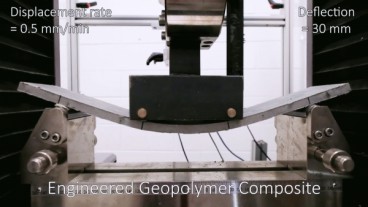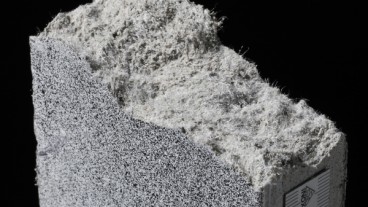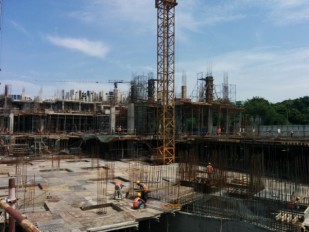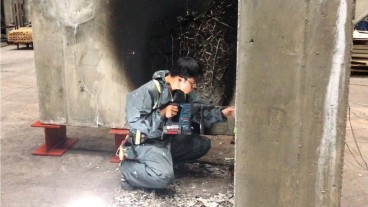
A group of scientists examines the possibility of using materials from demolitions for the construction of new buildings
A group of scientists examines the possibility of using materials from demolitions for the construction of new buildings
Concrete is the most commonly used construction material, and more than half of it ever used, was produced in the last 20 years. However, it has a great environmental impact when it is disposed of. Recycling of materials the other hand is very important in our times, in order to achieve environmental sustainability.
In that direction, a team of researchers at the University of Notre Dame are trying to develop an understanding of how using recycled concrete affects the behavior of reinforced concrete structures. And although the option to replace cement with industrial by-products (such as fly ash, slag and silica fume) has already been examined and tested, the possibility to reuse the coarse aggregates was not considered until recently.
“Coarse aggregates, such as crushed rock and gravel, make up for most of a given concrete volume. The mining, processing and transportation operations for these aggregates consume large amounts of energy and adversely affect the ecology of forested areas and riverbeds’’, says Yahya “Gino” Kurama, a professor of civil and environmental engineering and Earth sciences, who is leading the research effort. “Through my research, I want to contribute to efforts towards reducing these demands on our natural environment by reducing the need for natural coarse aggregates,” Kurama continues. “Especially in the years to come, the renovation and replacement of our nation’s aging infrastructure will result in both an increase in the supply of old concrete rubble and the demand for new concrete. We need to be better prepared to utilize this growing resource at a higher level, which is what my research is focused on.”
The barriers
Although recycling appears feasible, there are still uncertainties regarding the quality of the reused materials. These, in turn, may affect the strength, stiffness and durability of the reinforced concrete. The researchers have been investigating recycling materials from a large number of sources, thereby studying the inherent variability in material quality and properties. They also examine the deflection behavior of a structure as well as the potential of using recycled aggregates in the precast concrete industry.
Up to now, the use of recycled aggregates in the U.S. has been limited mostly to non-structural applications such as sidewalks and roadways, even though the quality of the materials is generally significantly higher than is required in these applications
Their ultimate goal is to develop the necessary engineering background and methods for the wider utilization of recycled concrete aggregates in structural concrete (such as in buildings) to reduce the overall environmental impact of the construction process.
Source: University of Notre Dame
Source: University of Notre Dame
Want to read more like this story?

Recycled aggregate concrete as an alternative to conventional concrete
Nov, 30, 2020 | NewsA new research focuses on the potential of concrete made of recycled aggregates and compares its per...

Scientists produce high bending capacity concrete using no cement
Mar, 11, 2020 | NewsScientists from Swinburne University in Melbourne, Australia, have created a new concrete material t...

3D-printed buildings using soil material
Sep, 24, 2020 | NewsResearchers have developed a new technique to construct a building using a 3-D printer and soil mate...
The world’s first carbon concrete building constructed by researchers in Germany
Nov, 17, 2022 | NewsThe first building made of carbon-reinforced concrete was inaugurated in September after two and a...

Astronauts investigate what happens to concrete when it's mixed in space
Sep, 11, 2019 | NewsIn an innovative attempt, astronauts examined what happens to concrete when it's produced in sp...

New sustainable material that will replace steel in reinforced concrete
Dec, 27, 2019 | NewsA new technique that involves replacing steel with polyethylene in reinforced concrete has been deve...

New study shows that plastic waste can replace sand in concrete
Sep, 21, 2018 | NewsAccording to researchers from Bath University, waste plastic can replace some of the sand used in co...

Rare mineral that improves the long-term performance of concrete
Feb, 05, 2021 | NewsScientists from Nagoya University have detected a rare mineral that improves the mechanical pro...

Fire-damaged concrete structures: how do we know when to fix or rebuild a concrete structure after a fire?
Nov, 22, 2021 | NewsGenerally, when concrete is exposed to intense fire, materials in the concrete can decompose, and c...
Trending

Vertical gardens in Mexico City to combat pollution

Saudi Park Closed After 360 Big Pendulum Ride Crashes to Ground, 23 injured

Characteristics of Load Bearing Masonry Construction

Taipei 101’s impressive tuned mass damper

Dutch greenhouses have revolutionized modern farming

Federal court rules Biden’s offshore drilling ban unlawful


